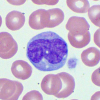
 IJCP Editorial Team
IJCP Editorial Team
Groundbreaking Study Suggests Hair Growth Treatment Found in Skin Moles
A recent study published in the journal Nature has revealed a potential breakthrough in the treatment of hair loss using molecules found in skin moles. Researchers at the University of California, Irvine, have been investigating the reasons behind the excessive hair growth in moles and have discovered specific molecules that promote hair growth.
Maksim Plikus, a professor of developmental and cell biology at UC Irvine, and the study's lead author, stated that the team found important clues in hairy skin moles provided by Nature. The study focused on understanding hair follicle growth in individuals with alopecia or androgenic alopecia, commonly called baldness or pattern baldness. In these cases, hair follicle stem cells remain dormant, preventing new hair growth.
Experiments on mice demonstrated that a molecule called osteopontin, prevalent in hairy skin moles, can activate dormant hair follicle stem cells. The researchers grafted human skin samples onto the mice and administered three injections of osteopontin, resulting in the growth of new hairs measuring approximately 1 centimeter in length within days. In contrast, injections of a neutral protein in a different location on the skin did not induce hair growth, confirming the role of osteopontin in the process.
The significance of this research lies in its applicability to humans. Unlike studies focused solely on mouse fur, this study utilized human skin samples and tested a molecule found in human moles, making the findings more relevant to potential human treatments.
The research has attracted the attention of biotech company Amplifica, which is licensing Plikus's research and moving it forward to clinical trials. The company may initiate its first human trial in the coming months, evaluating the safety of a compound developed to deliver osteopontin via scalp injections. Subsequent trials will focus on evaluating the safety of a synthetic version of osteopontin.

IJCP Editorial Team
Comprising seasoned professionals and experts from the medical field, the IJCP editorial team is dedicated to delivering timely and accurate content and thriving to provide attention-grabbing information for the readers. What sets them apart are their diverse expertise, spanning academia, research, and clinical practice, and their dedication to upholding the highest standards of quality and integrity. With a wealth of experience and a commitment to excellence, the IJCP editorial team strives to provide valuable perspectives, the latest trends, and in-depth analyses across various medical domains, all in a way that keeps you interested and engaged.









.jpg)










Please login to comment on this article